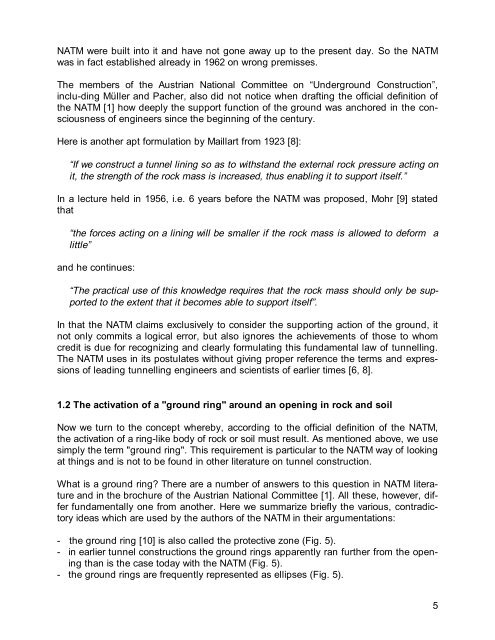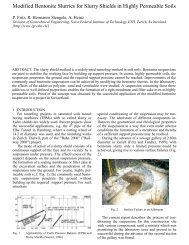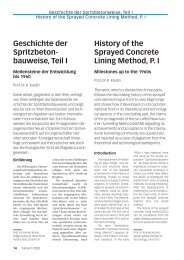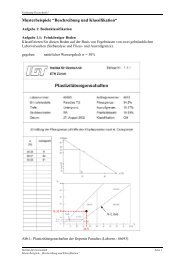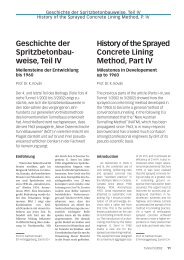Erroneous Concepts behind NATM
Erroneous Concepts behind NATM
Erroneous Concepts behind NATM
Create successful ePaper yourself
Turn your PDF publications into a flip-book with our unique Google optimized e-Paper software.
<strong>NATM</strong> were built into it and have not gone away up to the present day. So the <strong>NATM</strong><br />
was in fact established already in 1962 on wrong premisses.<br />
The members of the Austrian National Committee on “Underground Construction”,<br />
inclu-ding Müller and Pacher, also did not notice when drafting the official definition of<br />
the <strong>NATM</strong> [1] how deeply the support function of the ground was anchored in the consciousness<br />
of engineers since the beginning of the century.<br />
Here is another apt formulation by Maillart from 1923 [8]:<br />
“If we construct a tunnel lining so as to withstand the external rock pressure acting on<br />
it, the strength of the rock mass is increased, thus enabling it to support itself.”<br />
In a lecture held in 1956, i.e. 6 years before the <strong>NATM</strong> was proposed, Mohr [9] stated<br />
that<br />
“the forces acting on a lining will be smaller if the rock mass is allowed to deform a<br />
little”<br />
and he continues:<br />
“The practical use of this knowledge requires that the rock mass should only be supported<br />
to the extent that it becomes able to support itself”.<br />
In that the <strong>NATM</strong> claims exclusively to consider the supporting action of the ground, it<br />
not only commits a logical error, but also ignores the achievements of those to whom<br />
credit is due for recognizing and clearly formulating this fundamental law of tunnelling.<br />
The <strong>NATM</strong> uses in its postulates without giving proper reference the terms and expressions<br />
of leading tunnelling engineers and scientists of earlier times [6, 8].<br />
1.2 The activation of a "ground ring" around an opening in rock and soil<br />
Now we turn to the concept whereby, according to the official definition of the <strong>NATM</strong>,<br />
the activation of a ring-like body of rock or soil must result. As mentioned above, we use<br />
simply the term "ground ring". This requirement is particular to the <strong>NATM</strong> way of looking<br />
at things and is not to be found in other literature on tunnel construction.<br />
What is a ground ring? There are a number of answers to this question in <strong>NATM</strong> literature<br />
and in the brochure of the Austrian National Committee [1]. All these, however, differ<br />
fundamentally one from another. Here we summarize briefly the various, contradictory<br />
ideas which are used by the authors of the <strong>NATM</strong> in their argumentations:<br />
- the ground ring [10] is also called the protective zone (Fig. 5).<br />
- in earlier tunnel constructions the ground rings apparently ran further from the opening<br />
than is the case today with the <strong>NATM</strong> (Fig. 5).<br />
- the ground rings are frequently represented as ellipses (Fig. 5).<br />
5


